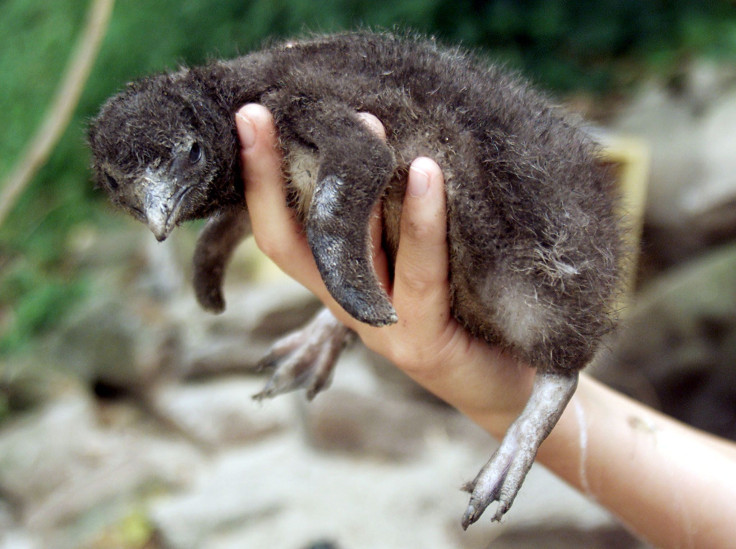Blue Penguin Born At New Jersey's Adventure Aquarium: Adorable Little Chick From Australia Needs A Name [PHOTOS]

One of Camden, New Jersey’s newest residents has webbed feet and eats 25 fish a day: It’s a little blue penguin, hatched at the Adventure Aquarium.
The aquarium announced the female chick made her appearance on Dec. 3, the first chick to be hatched from the little blue penguin colony, originally from Australia and brought the aquarium last year, the Philadelphia Inquirer reported.
“The birth of our first little blue chick is not only a historic event for Adventure Aquarium but it is also extremely exciting for our team and the colony,” Michele Pagel, curator of Birds and Mammals at Adventure Aquarium, said in a blog post on the aquarium's website. “We were also fortunate to have very attentive parents for this little blue. Mom and dad have been amazing from day one.”
On Phillip Island, the little blues spend most of their days swimming and hunting. #AAQFeaturedCreature pic.twitter.com/WEYsvoL1pV
— Adventure Aquarium (@AdventureAqua) January 7, 2017
The little blue penguin, also known as the fairy penguin, is the smallest of the 18 species of penguin. #AAQFeaturedCreature pic.twitter.com/gvXlCv1DZ9
— Adventure Aquarium (@AdventureAqua) January 3, 2017
Little Blue kind of afternoon. 💙 #AAQMoment (📷: Michele Pagel) pic.twitter.com/aJodR448Uv
— Adventure Aquarium (@AdventureAqua) December 8, 2016
The hatchling doesn’t have a name yet, but the aquarium plans to let visitors decide what the bird should be called in an online vote later this month.
The baby penguin has grown from 1.23 ounces to 2 pounds, 3 ounces since its birth — its weight is already comparable to the adult penguins in its colony. Penguins have an accelerated growth rate, according to the aquarium blog post.
With the new addition, the penguin colony has now grown to nine birds. This is the first chick for the baby’s parents, Sheila and Goose. But for now, aquarium keepers are caring for the little bird until she’s mature enough to join her colony.
“Young penguins need to learn how to eat from human hands, associate fish with the feed bucket and learn to be social with the keepers, which are all important steps to becoming part of the little blue colony,” said Pagel in the blog post. “This little blue, who is extremely laid back and relaxed, quickly took to her keepers as her new caregivers, eating from them the very first day. This was really the best case scenario when transitioning to our care.”
© Copyright IBTimes 2025. All rights reserved.






















